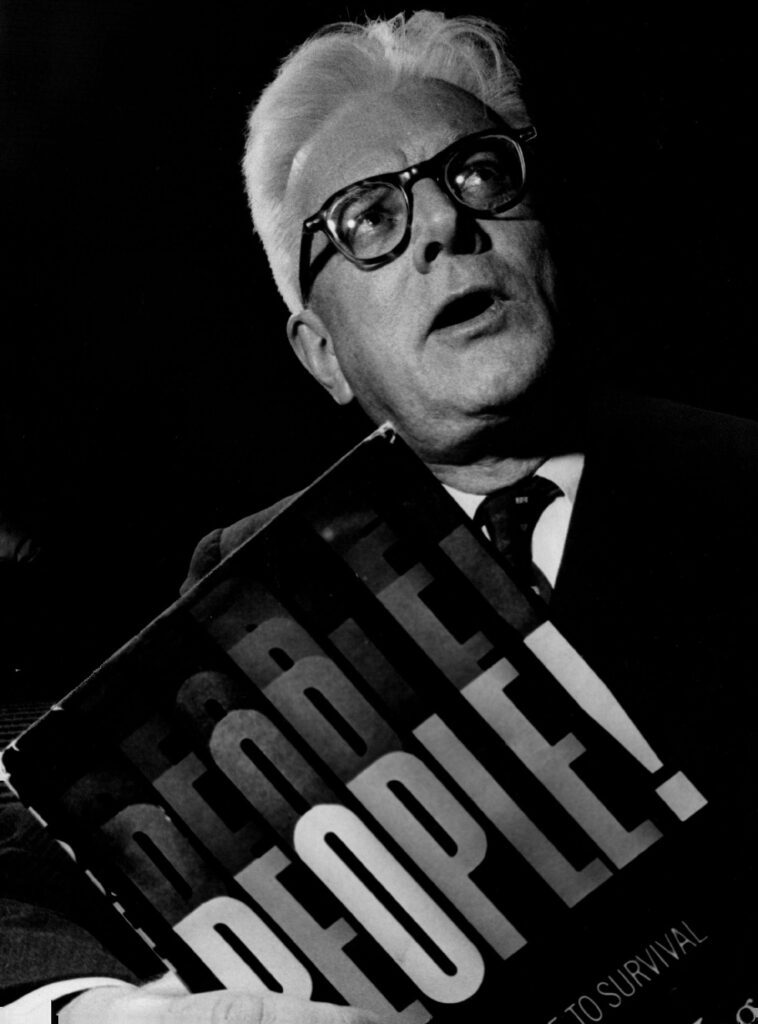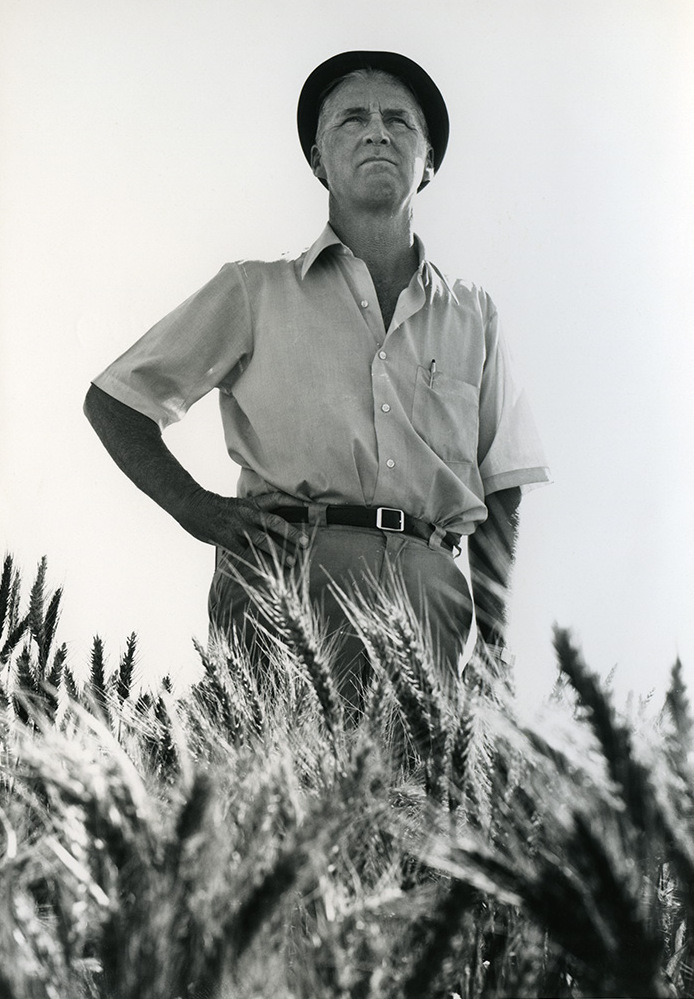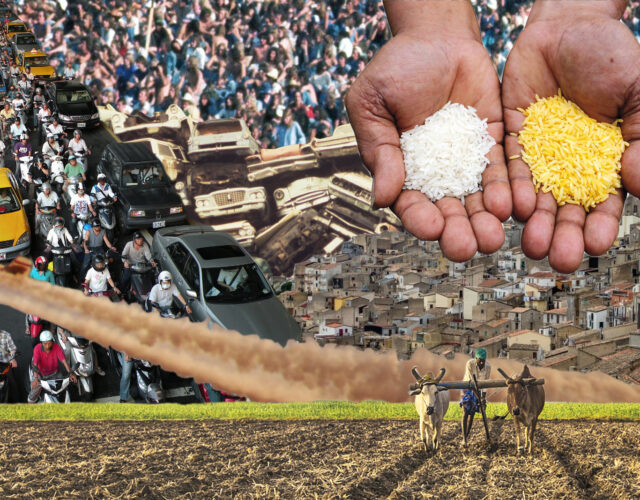Charles C. Mann. The Wizard and the Prophet: Two Remarkable Scientists and Their Dueling Visions to Shape Tomorrow’s World. Knopf, 2018. 640 pp. $29.
Not long ago my running buddy and I were walking to the start line of the Long Island Half Marathon when we passed a fenced-in grassy area. I assumed it was just a retention pond, but when I rounded the corner, a sign rose above the chain-link fencing. The Hempstead Plains, it read.
The Hempstead Plains? The Hempstead Plains? I grew up on Long Island and had never heard of us having any plains. I stood among the runners on the eight-lane road that curved around the Nassau Coliseum, an Ayers Rock rising above a stretch of parking lots, and racked my brain. What could this area have looked like before Long Island’s suburban sprawl swallowed it with an asphalt sea?
While today only a few acres remain, the Hempstead Plains once stretched for 60,000 acres clear across Nassau County and into neighboring Queens and Suffolk Counties. One of the few natural prairies east of the Allegheny Mountains, it was covered in native grasses and filled with birds. The prairie, originally surrounded by oak forests, had civilization pressing on its borders by the early 20th century. In 1902, in one of the towns flanking the plains, William Vogt entered this world.
A shy and solitary child, Vogt spent many of his early years exploring the mostly untouched Hempstead Plains. “I learned the pleasures of solitude,” he said, “the unbroken freedom to see, smell, and listen. These hours alone, though never many at a time, nonetheless sensitized me to the open countryside and prepared me for the enjoyment of winds and skies, plains, mountains, forests and the sea, for the rest of my life.” Memories of this time sustained Vogt when his family moved to the congestion and concrete of Brooklyn. When he contracted polio at Boy Scout camp at age 14, long walks became impossible, and he switched to birdwatching.
Vogt’s love of birding led him to jobs at bird sanctuaries and in the ornithology department of the American Museum of Natural History. Around this time he began to notice the damage modern civilization was wreaking on his beloved wild spaces. In the 1930s drainage ditches were slashed into the marshes and wetlands across Long Island and elsewhere to help control mosquitoes and malaria; Vogt watched in dismay as the birds fled. He used his soapbox as editor of the Audubon Society’s journal to rail against these destructive practices and to rally his fellow birdwatchers to fight the good fight and become stewards of the environments in which their favorite creatures lived. Vogt’s rants annoyed people who thought they had signed up for a newsletter about birdwatching, and the society soon showed Vogt the door. But he had found his calling: protecting the delicate balance that supports life on Earth.
William Vogt is one of two scientists Charles C. Mann profiles in The Wizard and the Prophet: Two Remarkable Scientists and Their Dueling Visions to Shape Tomorrow’s World, a book whose origin dates to the birth of Mann’s daughter and his worries about her future on an increasingly crowded planet. “Is the world big enough, rich enough for all these people to flourish?” the author asks. “Or have I brought my children into a time of general collapse?” In search of an answer Mann uses the contrasts between his two scientists to illustrate two very different approaches to looming ecological crises.
Vogt is the book’s titular prophet, warning the sinful to change their destructive ways before it’s too late. “In particular,” writes Mann, “[Vogt] founded . . . ‘apocalyptic environmentalism’—the belief that unless humankind drastically reduces consumption and limits population, it will ravage global ecosystems. In best-selling books and powerful speeches, Vogt argued that affluence is not our greatest achievement but our biggest problem. If we continue taking more than the Earth can give, he said, the unavoidable result will be devastation on a global scale. Cut back! Cut back! was his mantra.”

The wizard in Mann’s tale—and the counter to Vogt—is agricultural scientist Norman Borlaug, whose early life shaped his worldview as much as the Hempstead Plains shaped Vogt’s. Borlaug, who was born in 1914, grew up on an impoverished farm in Saude, Iowa. His family had picked the town for its close-knit Norwegian community rather than the quality of the soil, which was shallow and badly drained. Mann paints a bleak picture: “The wet conditions fostered crop diseases; stem rust attacked wheat so often that most local farmers, the Borlaugs among them, gave up planting it. Poor soil translated into poverty for all and early death for many.” Yet farming remained the residents’ way of life, and Borlaug spent much of his childhood struggling along with his family, harvesting corn by hand, the sharp leaves slicing through his clothes and leaving him bleeding.
Life changed dramatically when his family scratched together enough to buy a tractor. The Borlaugs no longer needed draft animals to pull plows, so the land devoted to growing feed (half the farm!) could now be planted with crops. “The extra production meant extra money,” writes Mann, “which allowed [Borlaug’s father, Henry] to buy more fertilizer and better seed, further increasing production. Ultimately, Henry’s harvest quadrupled—on the same land.” This impressed on young Norm the near-miraculous capabilities of technology to improve people’s lives, and he devoted his career to making sure farmers could always grow enough food. It’s estimated his work on disease-resistant crops prevented a billion deaths, and it won him the 1970 Nobel Peace Prize. If Vogt’s mantra was “Cut back or everyone will lose!” Borlaug’s rallying cry was “Innovate so everyone can win!”
Many scientists today could well be classified as wizards or prophets by their response to humanity’s impact on the world. While each camp has its own set of noble goals, Mann shows how these goals operate at cross-purposes. Why would we cut back if we can always engineer ourselves out of our problems? But what if the solutions end up causing more problems than they solve? “Wizards view the Prophets’ emphasis on cutting back as intellectually dishonest, indifferent to the poor, even racist (because much of the world’s hungry are non-Caucasian). Following Vogt, they say, is a path toward regression, narrowness, and global poverty,” writes Mann. In return, “Prophets sneer that the Wizards’ faith in human resourcefulness is unthinking, scientifically ignorant, even driven by greed (because remaining within ecological limits will cut into corporate profits). Following Borlaug, they say, at best postpones an inevitable day of reckoning.”
Vogt argued that affluence is not our greatest achievement but our biggest problem.
Which camp is right? Mann ponders the answer by taking four big problems facing humanity—food shortages, dwindling freshwater supplies, surging energy consumption, and climate change—and examines them through the eyes of wizards and prophets. These are difficult challenges being tackled by passionate people who don’t always agree on the best way to fix a given situation.
Take, for example, nitrogen fertilizer. The Haber-Bosch process takes nitrogen out of the air and turns it into ammonia for fertilizer, a feat that makes it perhaps the most important industrial process of the 20th century. Its success has quadrupled the productivity of agricultural land, a definite win for the wizards! “Think of the deaths from hunger that have been averted,” writes Mann, “the opportunities granted to people who would not otherwise have had a chance to thrive, the great works of art and science created by those who would have had to devote their lives to wringing sustenance from the earth. Particle accelerators in Japan, Switzerland, and Illinois; One Hundred Years of Solitude and Things Fall Apart; vaccines, computers, and antibiotics; the Sydney Opera House and Stephen Holl’s Chapel of St. Ignatius . . . How many would exist if this Wizardly triumph had not produced the nitrogen that filled their creators’ childhood plates?”
But the sudden abundance of food enabled a worldwide population explosion (arguably problem number 1) and dumped tons of nitrogen into Earth’s waterways as farm runoff, encouraging the growth of algal blooms that deplete oxygen and leave vast dead zones in their wake (problem number 2). Sure, nitrogen fertilizer allowed many people to live who might not have otherwise, but aren’t we just hastening the day of our own annihilation by wizardly side effects? Heed our warnings, cry the prophets! Destroy the land and you destroy yourselves! Organic farming is the way to go! Will it produce as much food as scientifically enhanced farming? To prophets that’s not the point: “To their minds,” writes Mann, “evaluating farming systems wholly in terms of calories produced . . . is a perfect example of the flaws of reductive thinking. It does not include the costs of overfertilization, habitat loss, watershed degradation, soil erosion and compaction, and pesticide and antibiotic overuse; it doesn’t account for the destruction of rural communities; it doesn’t consider whether the food is tasty and nutritious.”
Just as contentious as food supply is freshwater supply. Only 2.5% of Earth’s water is fresh water, and of that more than two-thirds is locked up in ice caps and glaciers. Most of what’s left is groundwater, which is largely unusable or inaccessible. Despite these limitations the fresh water still available to us is more than we need, but it’s not evenly distributed around the globe. “Brazil, which has one-sixth as many people as India, has more than four times as much water,” writes Mann. “The total supply is enough for both nations, but there is no way to distribute it from one to the other.”

Wizards and prophets disagree on how to deal with this problem. Wizards see opportunity. Desalination plants! Water pipelines! Expanded dams! Prophets, naturally, have other thoughts. Desalination plants, for instance, are energy hogs that pollute the sea and kill marine life with the salt they discharge. Prophets, writes Mann, will point to “an array of small-scale changes that mostly involve nudging people and businesses to change their habits and become more efficient.” That’s all well and good, say the wizards, but explain how those ideas will work in a region already short of water?
It’s unlikely either side will convert the other. And for his part Mann refrains from passing judgment on which approach offers the best way forward. By his own admission he waffles between the two ideologies. Likely some combination of prophecy and wizardry will be the key to making Earth a welcoming home for however many humans come to inhabit it.
Mann closes his book by describing the later, disquieted lives of the original prophet and wizard.
Vogt wore out his welcome almost everywhere he landed. A fundraising job at the International Union for the Protection of Nature lasted only a year because he had annoyed the U.S. State Department, one of the organization’s major funders. The Conservation Foundation, which he helped found, ejected him from their advisory board. Planned Parenthood, where he served as national director, fired him. His attacks on capitalism made him a pariah in a time when communism seemed like a real threat. Vogt ultimately killed himself in 1968.
Borlaug became a target of scorn for the unintended consequences of the Green Revolution. Critics booed him at conferences for the agricultural ecosystems and drinking water spoiled by pesticides, the farmland wrecked by overirrigation and residual salts, and the high energy costs—mainly from fertilizer production—of this new way of farming. Mann presents the indictment bluntly: “Industrial-style Borlaugian agriculture is a significant contributor to air pollution and climate change.”
Between 1970 and 1989, 80% of the academic studies on the Green Revolution painted the movement in a negative light, and the antipathy persisted. In 2007 political journalist Alexander Cockburn accused Borlaug of mass murder, claiming Borlaug’s “ ‘green revolution’ wheat strains led to the death of peasants by the millions.” The attacks stung Borlaug, who maintained that problems were due to bad policy and administration rather than the technologies themselves. In other words, the wealthy often monopolized the benefits of the Green Revolution, while the poor suffered from its side effects.
Both Vogt and Borlaug, who died in 2009, felt that despite having given everything—their knowledge, their hard work, their entire lives—the world was ungrateful. But we’ll need both of their approaches if we want the best chance at facing what’s ahead. Estimates show Earth’s population will reach 10 billion by the year 2050. A sizable percentage will be middle class, with the consumption level to match that status. Harvests will have to increase 50% or more in order to feed everyone. More than 4 billion people could face water shortages as early as 2025. At what point will Earth have nothing left to give despite our efforts?




